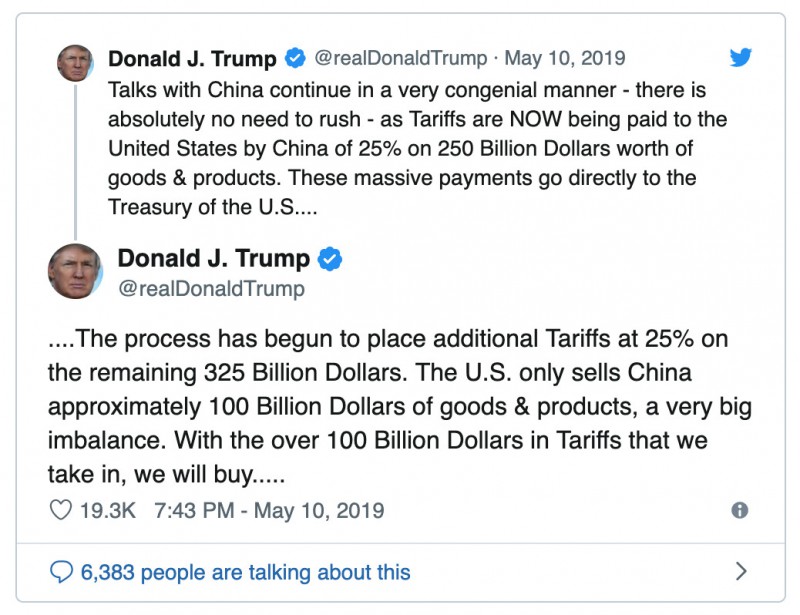拖延期似乎已经结束。路透社报道,据白宫和美国贸易代表工作室消息,5月10日上午12点,川普政府将价值2000亿美元的中国进口商品的关税从10%提高到25%。

关税征收对象包括逆变器(8504.40.95:静态转换器)、交流模块(8501.61.00:输出功率不超过75 kVA的交流发电机)和非锂离子电池(二氧化锰,氧化汞,铅酸,镍镉或镍铁)。
今年1月,太阳能世界向中国逆变器制造商询问他们如何应对关税从10%上升到25%的局面。特朗普当选后,一些总部设在中国的公司承担关税将是不可避免的。Sungrow先发制人地接管印度班加罗尔的一家工厂,在发生贸易战时,年产能为3吉瓦。一位发言人表示,如果关税增加到25%,它将把100%的美国逆变器生产转移到该工厂。
同样,微逆变器制造商Enphase于2018年9月宣布,它将扩大与墨西哥跨国技术制造商Flex的合作,作为关税缓解计划的一部分。它计划在本季度开始将美国市场的微型逆变器生产转移到Flex。
The stalling period has appeared to have come to an end. Although there’s no confirmation yet from The White House or Office of the U.S. Trade Representative, Reuters is reporting the Trump administration raised tariffs on $200 billion worth of Chinese imports from 10 to 25% at 12:01 a.m. on Friday, May 10
These tariffs include inverters (8504.40.95: Static converters), AC modules (8501.61.00: AC generators of an output not exceeding 75 kVA) and non-lithium-ion batteries (those made of manganese dioxide, mercuric oxide, lead acid, nickel cadmium or nickel iron).
In January, Solar Power World asked Chinese inverter manufacturers how they’re preparing for the possibility of tariffs jumping from 10 to 25%. Some China-headquartered companies assumed tariffs would be inevitable as soon as Trump became president. Sungrow preemptively took over a facility in Bangalore, India, with 3 GW of annual production capacity in case a trade war began. A spokesperson said it would move 100% of U.S. inverter production to that plant if the tariffs increased to 25%.
Similarly, microinverter manufacturer Enphase announced in September 2018 it expanded its contract with multinational technological manufacturer Flex in Mexico as part of a mitigation plan for the tariffs. It planned to move production of microinverters for the U.S. market to Flex starting this quarter. Click here to read about how other inverter manufacturers were preparing for high tariffs.
Out of the 18 company reps that answered Solar Power World’s solar inverter manufacturing survey, more than half said their companies would be affected in some way by the Chinese tariffs. It seems manufacturers were realistic about the possibility of the tariff hike, but time will tell whether their preparation efforts were enough to weather the higher tariff’s impact.
索比光伏网 https://news.solarbe.com/201905/14/307117.html



